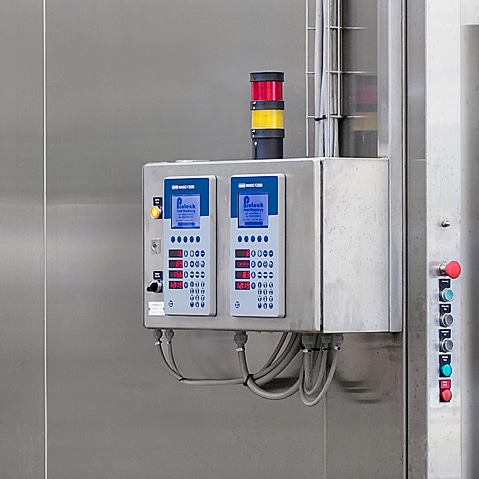In today’s fast-paced culinary industry, industrial cooking equipment has become an essential component for food service operations. The latest innovations and technologies in industrial cooking equipment have revolutionized the way food is prepared, cooked, and served. From advanced ovens and ranges to high-tech fryers and grills, the options for industrial cooking equipment are vast and diverse.
One of the most significant innovations in industrial cooking equipment is the integration of smart technology. This includes features such as programmable cooking settings, temperature control, and automated cooking processes. These advancements not only improve the efficiency of cooking operations but also ensure consistent and high-quality results. Additionally, the use of energy-efficient technology in industrial cooking equipment has become a priority for many food service establishments. This includes the development of eco-friendly cooking appliances that reduce energy consumption and minimize environmental impact. Overall, the latest innovations in industrial cooking equipment have transformed the way food is prepared and cooked, leading to improved productivity, cost savings, and enhanced food quality.
Commercial Cooking Machines: A Look at the Top Models for Restaurant and Food Service Operations
Commercial cooking machines play a crucial role in the success of restaurant and food service operations. From high-capacity mixers and blenders to versatile food processors and slicers, commercial cooking machines are designed to streamline food preparation and cooking processes. The top models for restaurant and food service operations are equipped with advanced features and capabilities to meet the demands of high-volume production.
One of the top models for restaurant and food service operations is the commercial convection oven. This versatile cooking machine utilizes a fan to circulate hot air, resulting in faster and more even cooking. Commercial convection ovens are available in various sizes and configurations to accommodate different kitchen layouts and production needs. Another essential commercial cooking machine is the high-speed blender, which is designed to quickly blend, puree, and emulsify ingredients. These powerful machines are ideal for creating smoothies, soups, sauces, and other liquid-based recipes. Overall, the top models for restaurant and food service operations are designed to enhance efficiency, productivity, and food quality in commercial kitchens.
High-Efficiency Cooking Systems: How Modern Technology is Revolutionizing the Culinary Industry
High-efficiency cooking systems have become a game-changer in the culinary industry, thanks to modern technology. These innovative systems are designed to optimize energy usage, reduce cooking times, and improve overall kitchen productivity. One of the key advancements in high-efficiency cooking systems is the integration of induction technology. Induction cooktops utilize electromagnetic energy to directly heat pots and pans, resulting in faster cooking times and precise temperature control. This technology not only reduces energy consumption but also minimizes heat loss, making it a more efficient option for commercial kitchens.
Another modern technology revolutionizing high-efficiency cooking systems is the development of combi ovens. These versatile cooking appliances combine convection heat, steam, and sometimes even a combination of both to provide a wide range of cooking methods in a single unit. Combi ovens are known for their ability to cook food quickly and evenly while retaining moisture and flavor. Additionally, many modern combi ovens are equipped with smart features such as programmable cooking settings, self-cleaning functions, and remote monitoring capabilities. Overall, high-efficiency cooking systems are transforming the culinary industry by offering advanced technology that improves energy efficiency, cooking performance, and kitchen operations.
Batch Cooking Solutions: Streamlining the Cooking Process for Large-Scale Food Production
Batch cooking solutions have become essential for large-scale food production operations, as they streamline the cooking process and improve overall efficiency. These solutions are designed to handle high volumes of food while maintaining consistent quality and flavor. One of the key components of batch cooking solutions is the use of large-capacity kettles and braising pans. These versatile cooking vessels are capable of preparing large batches of soups, stews, sauces, and other liquid-based recipes with ease.
Another essential aspect of batch cooking solutions is the integration of automated cooking systems. These systems utilize advanced technology to control cooking processes such as temperature, time, and agitation, resulting in precise and consistent results. Additionally, batch cooking solutions often incorporate advanced safety features to ensure a safe working environment for kitchen staff. For example, many large-scale batch cooking solutions are equipped with automatic shut-off mechanisms, pressure release valves, and temperature monitoring systems. Overall, batch cooking solutions are revolutionizing large-scale food production by offering efficient, reliable, and safe cooking processes.
Continuous Cooking Technology: Understanding the Benefits and Applications in the Food Industry
Continuous cooking technology has gained popularity in the food industry due to its ability to provide consistent and high-quality results while maximizing productivity. This innovative technology is designed to continuously cook large quantities of food without interruption, making it ideal for high-volume production environments. One of the key benefits of continuous cooking technology is its ability to maintain precise temperature control throughout the cooking process. This ensures that food is cooked evenly and thoroughly, resulting in consistent quality and flavor.
Another advantage of continuous cooking technology is its versatility in handling a wide range of food products. Whether it’s meats, vegetables, grains, or dairy products, continuous cooking technology can accommodate various types of ingredients with different cooking requirements. Additionally, many continuous cooking systems are equipped with advanced features such as automatic cleaning cycles, programmable recipes, and remote monitoring capabilities. This not only improves kitchen efficiency but also reduces labor costs and maintenance efforts. Overall, continuous cooking technology offers numerous benefits and applications in the food industry by providing reliable, efficient, and versatile cooking solutions for large-scale production operations.




